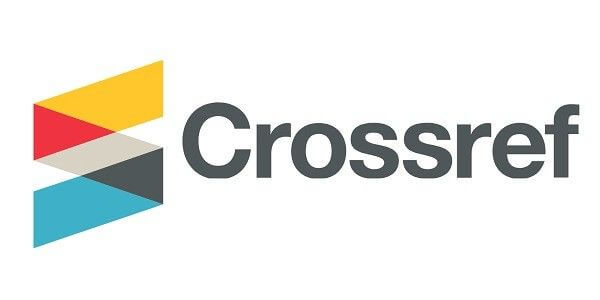Construct validation of the teacher attitude to inclusion scale for Filipino pre-service teachers
Keywords:
inclusive education, teacher efficacy, between-network construct validation, within-network construct validation, confirmatory factor analysisAbstract
Inclusive education is one of the visions of the global agenda of “education for all.” It aligns with Sustainable Development Goal 4: “Ensure inclusive and equitable quality education and promote life-long learning opportunities for all” (Harrington, 2016, p.30). The teacher’s attitude is one of the identified factors in the effective implementation of inclusive education. Hence, schools in the Philippines would require tools that measure the teachers’ attitudes toward inclusive education as they plan to accommodate inclusive education in their classrooms as mandated by Republic Act No. 11650: “Instituting a Policy of Inclusion and Services for Learners with Disabilities in Support of Inclusive Education Act.” This study examined the theoretical model of the Teacher Attitude to Inclusion Scale (Monsen, Ewing, & Boyle, 2015), specifically section 4 of the scale: “Attitudes toward Inclusion,” through a cross-sectional, explanatory nonexperimental design utilizing both between-network and between-network construct validation approaches. The participants were 417 pre-service teachers from private and state-owned universities in Luzon, Visayas, and Mindanao, selected through convenience sampling. They completed two sets of measures online, the fourth section of the Teacher Attitude to Inclusion and the Teachers’ Sense of Efficacy Scale (Tschannen-Moran & Hoy, 2001). The results of within-network and between-network construct validation suggest the acceptability of the reduced 10-item of section 4 of the Teacher Attitude to Inclusion Scale among Filipino pre-service teachers. Based on confirmatory factor analysis, the data fit the three-factor structure (i.e., factors 1, 2, and 4) rather than the original four-factor structure suggesting within-network construct validity. Furthermore, the relationships between the TAIS and the TSES subscales were positively correlated, indicating the TAIS's between-network construct validity. Since this scale is psychometrically sound for Filipino pre-service teachers, it is recommended to consider extending this study by examining the applicability of this scale to in-service teachers.
References
Alavi, M., Visentin, D. C., Thapa, D. K., Hunt, G. E., Watson, R., & Cleary, M. (2020). Chi-square for model fit in confirmatory factor analysis. Journal of Advanced Nursing, 76(9), 2209–2211. https://doi.org/10.1111/jan.14399 DOI: https://doi.org/10.1111/jan.14399
Alexandrova, A., & Haybron, D. M. (2016). Is construct validation valid? Philosophy of Science, 83(5), 1098-1109. https://doi.org/10.1086/687941 DOI: https://doi.org/10.1086/687941
Anderson, J. C., & Gerbing, D. W. (1988). Structural equation modeling in practice: A review and recommended two-step approach. Psychological Bulletin, 103(3), 411–423. https://doi.org/10.1037/0033-2909.103.3.411 DOI: https://doi.org/10.1037/0033-2909.103.3.411
Avramidis, E., Toulia, A., Tsihouridis, C., & Strogilos, V. (2019). Teachers’ attitudes towards inclusion and their self-efficacy for inclusive practices as predictors of willingness to implement peer tutoring. Journal of Research in Special Educational Needs, 19(S1), 49–59. https://doi.org/10.1111/1471-3802.12477 DOI: https://doi.org/10.1111/1471-3802.12477
Bandura, A. (1997). Self-efficacy: The exercise of control. New York, NY: W. H. Freeman.
Bernardo, A. B. I. (2011). Lost in translation? Challenges in using psychological tests in the Philippines. Silliman Journal, 52, 19-42.
Bernardo, A. B., Lising, R. L. S., & Shulruf, B. (2013). Validity of two language versions of the Auckland Individualism and Collectivism Scale with Filipino-English bilinguals. Psychological Studies, 58, 33-37. https://doi.org/10.1007/s12646-012-0172-8 DOI: https://doi.org/10.1007/s12646-012-0172-8
Byrne, B. (1984). The general/academic self-concept nomological network : A review of construct validation research. Review of Educational Research, 54(3), 427–456. https://doi.org/10.3102/00346543054003427 DOI: https://doi.org/10.3102/00346543054003427
Byrne, B. M. (2005). Factor analytic models: Viewing the structure of an assessment instrument from three perspectives. Journal of personality assessment, 85(1), 17-32. https://doi.org/10.1207/s15327752jpa8501_02 DOI: https://doi.org/10.1207/s15327752jpa8501_02
Clark, L. A., & Watson, D. (2019). Constructing validity: New developments in creating objective measuring instruments. Psychological assessment, 31(12), 1412. https://doi.org/10.1037/pas0000626 DOI: https://doi.org/10.1037/pas0000626
Commission on Higher Education. Guidelines in the Admission of Students with Disabilities in Higher Education and Post-Secondary Institutions in the Philippines. , (2017).
Cong, C. W., & Cheong, J. Y. (2022). Validation of Rosenberg self-esteem scale for Malaysian adolescents. Current Psychology, 1-4. https://doi.org/10.1007/s12144-022-02960-z DOI: https://doi.org/10.1007/s12144-022-02960-z
Datu, J. A. D., & Yang, W. (2018). Psychometric validity and gender invariance of the academic buoyancy scale in the Philippines: A construct validation approach. Journal of Psychoeducational Assessment, 36(3), 278-283. https://doi.org/10.1177/0734282916674423 DOI: https://doi.org/10.1177/0734282916674423
Dela Fuente, J. A. (2021). Implementing inclusive education in the Philippines: College teacher experiences with deaf students. Issues in Educational Research, 31(1), 94–110. https://search.informit.org/doi/10.3316/informit.748877765999107
Eagly, A. H., & Chaiken, S. (2007). The advantages of an inclusive definition of attitude. Social cognition, 25(5), 582-602. https://doi.org/10.1521/soco.2007.25.5.582 DOI: https://doi.org/10.1521/soco.2007.25.5.582
Flake, J. K., Pek, J., & Hehman, E. (2017). Construct validation in social and personality research: Current practice and recommendations.
Social Psychological and Personality Science, 8(4), 370-378. https://doi.org/10.1177/1948550617693063 DOI: https://doi.org/10.1177/1948550617693063
Fischer, R. (2004). Standardization to account for cross-cultural response bias: A classification of score adjustment procedures and review of research in JCCP. Journal of Cross-Cultural Psychology, 35(3), 263–282. https://doi.org/10.1177/0022022104264122 DOI: https://doi.org/10.1177/0022022104264122
Ganotice FA, Chow AYM, Fan KKH, et al. To IPAS or not to IPAS? Examining the construct validity of the Interprofessional Attitudes Scale in Hong Kong. Journal of Interprofessional Care. 2022 Jan-Feb;36(1):127-134. https://doi.org/10.1080/13561820.2020.1869705 DOI: https://doi.org/10.1080/13561820.2020.1869705
Goni, M. D., Naing, N. N., Hasan, H., Wan-Arfah, N., Deris, Z. Z., Arifin, W. N., Hussin, T. M. A. R., Abdulrahman, A. S., Baaba, A. A., & Arshad, M. R. (2020). Development and validation of knowledge, attitude and practice questionnaire for prevention of respiratory tract infections among Malaysian Hajj pilgrims. BMC Public Health, 20(1), 189. https://doi.org/10.1186/s12889-020-8269-9 DOI: https://doi.org/10.1186/s12889-020-8269-9
Hambleton, R. K. (2001). The Next Generation of the ITC Test Translation and Adaptation Guidelines. European Journal of Psychological Assessment, 17(3), 164–172. https://doi.org/10.1027//1015-5759.17.3.164 DOI: https://doi.org/10.1027//1015-5759.17.3.164
Harrington, A. (2016). Goal 4: Ensure inclusive and equitable quality education and promote life-long learning opportunities for all. Keeping Track: Measuring Progress Toward the UN Sustainable Development Goals.
Hernandez, D. A., Hueck, S., & Charley, C. (2016). General Education and Special Education Teachers’ Attitudes Towards Inclusion. Journal of the American Academy of Special Education Professionals, 11(3), 79–93.
Hu, L. T., & Bentler, P. M. (1999). Cutoff criteria for fit indexes in covariance structure analysis: Conventional criteria versus new alternatives. Structural Equation Modeling, 6(1), 1–55. https://doi.org/10.1080/10705519909540118 DOI: https://doi.org/10.1080/10705519909540118
Johnson, B. (2001). Toward a New Classification of Nonexperimental Quantitative Research. Educational Researcher, 30(2), 3–13. https://doi.org/10.3102/0013189X030002003 DOI: https://doi.org/10.3102/0013189X030002003
Johnson, B., & Christensen, L. (2000). Educational research: Quantitative and qualitative approaches. Allyn & Bacon.
Knekta, E., Runyon, C., & Eddy, S. (2019). One size doesn’t fit all: Using factor analysis to gather validity evidence when using surveys in your research. CBE—Life Sciences Education, 18(1), rm1. https://doi.org/10.1187/cbe.18-04-0064 DOI: https://doi.org/10.1187/cbe.18-04-0064
Kyriazos, T. A. (2018). Applied Psychometrics: Sample Size and Sample Power Considerations in Factor Analysis (EFA, CFA) and SEM in General. Psychology, 09(08), 2207–2230. https://doi.org/10.4236/psych.2018.98126 DOI: https://doi.org/10.4236/psych.2018.98126
Larrivee, B., & Cook, L. (1979). Mainstreaming: A study of the variables affecting teacher attitude. The Journal of Special Education, 13(3), 315–324. https://doi.org/10.1177/002246697901300310 DOI: https://doi.org/10.1177/002246697901300310
Maneesriwongul, W., & Dixon, J. K. (2004). Instrument translation process: a methods review. Journal of Advanced Nursing, 48(2), 175–186. https://doi.org/10.1111/j.1365-2648.2004.03185.x DOI: https://doi.org/10.1111/j.1365-2648.2004.03185.x
Martin, A. J., & Marsh, H. W. (2006). Academic resilience and its psychological and educational correlates: A construct validity approach. Psychology in the Schools, 43(3), 267–281. https://doi.org/10.1002/pits.20149 DOI: https://doi.org/10.1002/pits.20149
Matsunaga, M. (2010). How to Factor-Analyze Your Data Right: Do's, Don'ts, and How-To's. International journal of psychological research, 3(1), 97-110. DOI: https://doi.org/10.21500/20112084.854
Midi, H., Sarkar, S. K., & Rana, S. (2010). Collinearity diagnostics of binary logistic regression model. Journal of interdisciplinary mathematics, 13(3), 253-267. https://doi.org/10.1080/09720502.2010.10700699 DOI: https://doi.org/10.1080/09720502.2010.10700699
Monsen, J. J., Ewing, D. L., & Boyle, J. (2015). Psychometric Properties of the Revised Teachers’ Attitude Toward Inclusion Scale. International Journal of School and Educational Psychology, 3(1), 64–71. https://doi.org/10.1080/21683603.2014.938383 DOI: https://doi.org/10.1080/21683603.2014.938383
Nieva, A. (2022). The Relationship between Career Interests and Academic Achievements in English, Mathematics, and Science of Grade 10 Students. International Journal of Arts, Sciences and Education, 3(2). 10–21. Retrieved from https://www.ijase.org/index.php/ijase/article/view/122
Raguindin, P. Z. J., Ping, L. Y., Duereh, F., & Lising, R. L. S. (2020). Inclusive practices of in-service teachers: A quantitative exploration of a Southeast Asian context. European Journal of Educational Research, 9(2), 787–797. https://doi.org/10.12973/eu-jer.9.2.787 DOI: https://doi.org/10.12973/eu-jer.9.2.787
Saloviita, T. (2020). Attitudes of teachers towards inclusive education in Finland. Scandinavian journal of educational research, 64(2), 270-282. https://doi.org/10.1080/00313831.2018.1541819 DOI: https://doi.org/10.1080/00313831.2018.1541819
Sales, J. V., Uchi, N., & Solsona, R. (2022). Validating the Filipino teacher’s sense of efficacy scale using exploratory factor analysis. International Journal of Research, 11(11), 107-116. https://doi.org/10.5861/ijrse.2022.856 DOI: https://doi.org/10.5861/ijrse.2022.856
Simms, L. J., & Watson, D. (2007). The construct validation approach to personality scale construction. In R. W. Robins, R. C. Fraley, & R. F.
Krueger (Eds.), Handbook of research methods in personality psychology (pp. 240–258). New York, NY: Guilford Press.
Stevens, J. P. (2002). Applied multivariate statistics for the social sciences (4th ed.). Mahwah, NJ: Lawrence Erlbaum. Taber, K. S. (2018). The Use of Cronbach’s Alpha When Developing and Reporting Research Instruments in Science Education. Research in Science Education, 48(6), 1273–1296. https://doi.org/10.1007/s11165-016-9602-2
Taber, K. S. (2018). The Use of Cronbach’s Alpha When Developing and Reporting Research Instruments in Science Education. Research in Science Education, 48(6), 1273–1296. https://doi.org/10.1007/s11165-016-9602-2 DOI: https://doi.org/10.1007/s11165-016-9602-2
Technical Education and Skills Development Authority. (2020). Enabling the disabled: Social equity for all. Taguig.
Tehseen, S., Ramayah, T., & Sajilan, S. (2017). Testing and controlling for common method variance: A review of available methods.
Journal of management sciences, 4(2), 142-168. https://doi.org/10.20547/jms.2014.1704202 DOI: https://doi.org/10.20547/jms.2014.1704202
Tschannen-Moran, M., & Hoy, A. W. (2001). Teacher efficacy: Capturing an elusive construct. Teaching and Teacher Education, 17(7), 783–805. https://doi.org/10.1016/S0742-051X(01)00036-1 DOI: https://doi.org/10.1016/S0742-051X(01)00036-1
Tuncay, A. A., & Kizilaslan, A. (2022). Pre-service teachers’ sentiments, attitudes and concerns about inclusive education in Turkey. European Journal of Special Needs Education, 37(2), 309-322. https://doi.org/10.1080/08856257.2021.1873524 DOI: https://doi.org/10.1080/08856257.2021.1873524
UNESCO: Education Sector. (2017). A guide for ensuring inclusion and equity in education. In A guide for ensuring inclusion and equity in education.
Unesco. (1994). The Salamanca Statement and Framework for action on special needs education: Adopted by the World Conference on Special Needs Education; Access and Quality. Salamanca, Spain, 7-10 June 1994. Salamanca.
United Nations Educational Scientific and Cultural Organization. (2021). Philippines: Inclusion. Retrieved from https://education-profiles.org/eastern-and-south-eastern-asia/philippines/~inclusion
Urdan, T. C. (2017). Statistics in plain English (4th ed.). New York: Routledge Taylor & Francis Group.
Urton, K., Wilbert, J., & Hennemann, T. (2014). Attitudes towards inclusion and self-efficacy of principals and teachers. Learning Disabilities -- A Contemporary Journal, 12(2), 151–168. Retrieved from http://ezproxy.stthomas.edu/login?url=http://search.ebscohost.com/login.aspx?direct=true&db=keh&AN=100079021&site=ehost-live
Vazire, S., Schiavone, S. R., & Bottesini, J. G. (2022). Credibility beyond replicability: Improving the four validities in psychological science. Current Directions in Psychological Science, 31(2), 162-168. https://doi.org/10.1177/09637214211067779 DOI: https://doi.org/10.1177/09637214211067779
Villarosa, J., & Ganotice, F. (2018). Construct validation of Ryff’s psychological wellbeing scale: Evidence from Filipino teachers in the Philippines. Philippine Journal of Psychology, 51(1). https://doi.org/10.31710/pjp/0051.01.01 DOI: https://doi.org/10.31710/pjp/0051.01.01
Weisel, A., & Dror, O. (2006). School climate, sense of efficacy and Israeli teachers’ attitudes toward inclusion of students with special needs. Education, Citizenship and Social Justice, 1(2), 157–174. https://doi.org/10.1177/1746197906064677 DOI: https://doi.org/10.1177/1746197906064677
West, S. G., Taylor, A. B., & Wu, W. (2012). Model fit and model selection in structural equation modeling. In R. H. Hoyle (Ed.), Handbook of structural equation modeling (pp. 209– 231). New York, NY: The Guilford Press.
Wilson, C., Woolfson, L. M., & Durkin, K. (2019). The impact of explicit and implicit teacher beliefs on reports of inclusive teaching practices in Scotland. International Journal of Inclusive Education, 1–19. doi:10.1080/13603116.2019.1658813 DOI: https://doi.org/10.1080/13603116.2019.1658813
World Education Forum. (2015). Incheon Declaration: Education 2030. Retrieved from http://unesdoc.unesco.org/images/0023/002331/233137E.pdf
Yada, A., Leskinen, M., Savolainen, H., & Schwab, S. (2022). Meta-analysis of the relationship between teachers’ self-efficacy and attitudes toward inclusive education. Teaching and Teacher Education, 109, 103521. https://doi.org/10.1016/j.tate.2021.103521 DOI: https://doi.org/10.1016/j.tate.2021.103521
Ziegler, M. (2014). Comments on item selection procedures. European Journal of Psychological Assessment, 30(1). 1-2. https://doi.org/10.1027/1015-5759/a000196 DOI: https://doi.org/10.1027/1015-5759/a000196
- PDF | 452
- Abstract Views | 1058
Published
How to Cite
Issue
Section
Copyright (c) 2023 Alvin Nieva

This work is licensed under a Creative Commons Attribution-NonCommercial-NoDerivatives 4.0 International License.











